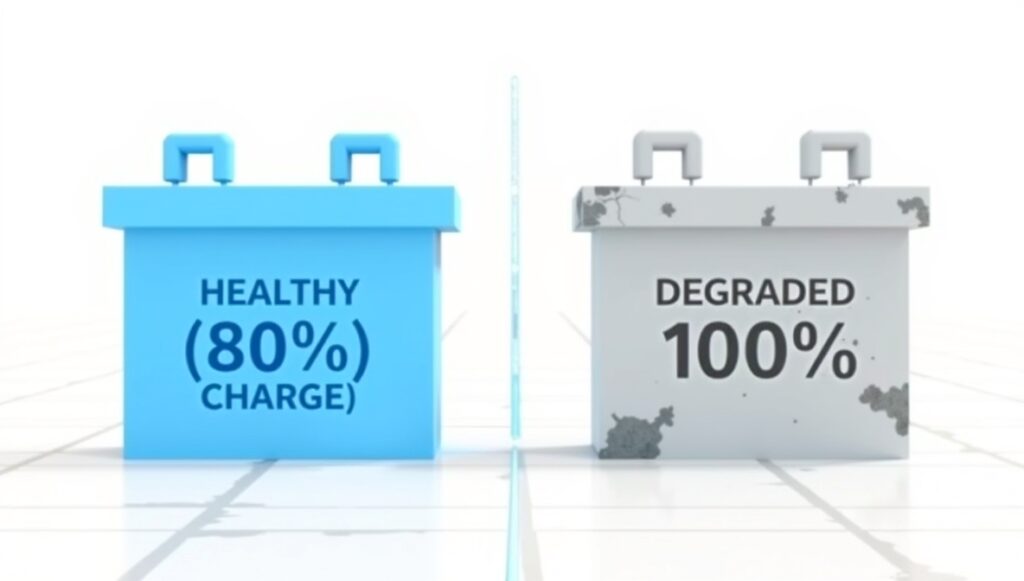Your EV battery is the heart of your car—and just like your heart, a little care goes a long way. While most drivers worry about range anxiety, the truth is battery degradation poses a far greater threat to your EV’s resale value. However, the good news is that with proper care, you can dramatically extend your battery’s lifespan. In fact, by following these science-backed tips, you could save thousands in replacement costs. Here’s your guide to extend EV battery life.

1: How EV Batteries Degrade (And Why It’s Not What You Fear)
- Science Simplified: To understand battery care, first imagine your battery as a sponge. When you charge to 100%, it’s like soaking the sponge until it drips—this causes faster wear over time. On the other hand, maintaining an 80% charge is comparable to keeping the sponge damp; it remains optimally functional. Similarly, temperature extremes affect your battery just as they would a sponge—too hot and it dries out, too cold and it becomes stiff.
- Myth Busting: Fast charging isn’t evil—but doing it daily is like eating fast food for every meal.

2: Five Surprising Ways to Extend Your Battery’s Life
- The 80% Rule:
- Tesla recommends charging to 90% for daily use. Nissan Leaf owners? Stick to 80%. Check your manual—it’s the bible for extending EV battery life.
- Temperature Hacks:
- While parking in the shade is crucial in Arizona, EV owners in Minnesota should focus on preconditioning their batteries while plugged in. Meanwhile, all drivers should remember that extreme temperatures are ultimately the most significant range killers. Therefore, adapting to your climate isn’t just helpful—it’s essential for battery longevity.
- Fast-Charging Secrets:
- Use DC fast chargers like espresso shots—great on road trips, terrible as a daily habit.
- Software Updates Matter:
- That ‘annoying’ update notification? It could tweak your battery management to add years.
- Storage Tips:
- Storing your EV for winter? 50% charge is the sweet spot—like pausing a movie at the climax.
3: When Your Battery Ages—What’s Next?
- Second Life: Did you know your “dead” EV battery could power solar farms for years? Learn what really happens to recycled EV batteries in our eye-opening guide.
- Replacement Costs: Yes, it’s 5,000–15,000—but most warranties cover 8 years/100,000 miles.
Final Thoughts
Your EV battery isn’t just a ‘part’—it’s the soul of your green machine. Try one tip this week (start with the 80% rule!), and share your results in the comments.

